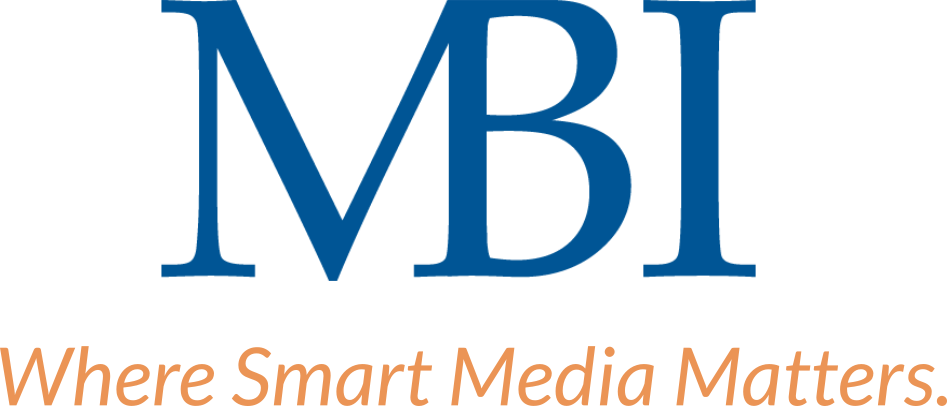When any owner is looking to grow their business, it doesn’t take long for them to notice something: The marketplace is crowded and noisy.
One of the hardest things to do no matter where you are in your business plan is to get the attention you deserve. However, there are a lot of ways to cut through that noise and put the spotlight on your product or service, and it all starts with one thing: Your Media Plan.
Your media plan is going to be the backbone of your campaign that gets your brand in front of the ideal audience and turns that audience into customers.
What is Media Planning?
Media planning is, by definition, the process of strategizing and purchasing media ad placements and deciding what the best combination of media is that will help you achieve your marketing goals. It’s a method for making decisions about your marketing campaign that will get it to your target audience at the right time and place with the right medium.
The plan that comes out of this process details where and how you’ll publish to best engage and convert your ideal customer. They provide structure for how your marketing campaign will use media such as writing, video, and audio to connect with customers.
Types of Media Planning
Several different forms of media may need to be considered and made part of your media planning process. These forms include:
Owned Media
Owned media is any kind of web property you can control that is unique to your brand. This can include blogs or videos that are shared on platforms that the marketer owns. Owned media can be very powerful as the more a brand has, the more chances it has to take up valuable space in the digital marketplace. As an extension of a brand, these owned media spaces give customers and lovers of your brand more ways to interact with it.
Paid Media
Paid media is exactly what it sounds like - marketing that you pay for. Part of your media planning process should be judging how much promotion of your brand will help you gain exposure in the places you want it most. Most social media platforms now offer paid media opportunities, and paid media can also help drive traffic to your owned media properties through simple searches.
Earned Media
Earned media is exposure that your brand has gained any other way than paid advertising. In broad terms, it’s “word of mouth.” However, in digital media terms, it can be mentions, shares, reposts, recommendations, or content you’ve created that is picked up by 3rd party sites.
All three of these types of media are essential to the media plan you make to grow your business and to get your brand exposed to just the right audience.
Benefits of Media Buying & Planning
Media buying deals solely with paid media. Media buying can look like buying ad space on various channels, paying to share targeted ads, or negotiating advertising with various media vendors.
While media buying and media planning are not synonymous with one another, media buying can’t exist successfully without media planning. The bottom line of all companies is usually the same: Stay on or below budget and invest in things that will bring you a solid ROI. When investing in paid media, proper media planning will ensure you have a strategy for getting the media in front of the right people to convert them into customers.
The Media Planning Process
There are four main steps in the media planning process. The results from each step will help you create a unique plan that serves the needs of your unique brand. The four steps of the process are:
Set Your Goals
If any plan is going to be successful, it needs to be rooted in clear goals and objectives. Taking time to define what your specific goals and objectives are will help you make strategic decisions. Whether your goal is to boost brand awareness for more conversions or to target certain buyer personas, you need to clearly define it to build your plan around.
Do Your Research
The first step is to conduct thorough market research so that you can create content and media that is perfectly suited to your target audience. This research includes studying buyer personas and refining a deep understanding of who your audience is. This information will make sure you are creating content that resonates with them and converts them into customers. This information will also let you know what platforms to share your media on as all platforms are used by different markets.
Plan, Plan, Plan
Now that you have a clear picture of who you are trying to reach, it’s time to sketch out the direction of your content. With them in mind, decide what kind of content will most resonate with them. Think carefully about tone in this step - what tone and messaging will your target audience most identify with?
Execute Your Plan
Once your plan is in place for what kind of content you will need, you need to begin executing the plan. This step goes from creating your content, reviewing content to ensure it fits your objectives and tone, and then deciding which media channels to distribute your content over depending on where your target audience can be found.
Measure Your Results
Once your campaign is live and reaching who you want it to reach, measuring how it’s performing is vital to making sure your plan is good and doesn’t need tweaking. Metrics that may help you make these decisions include using Google Analytics to see what traffic you’ve received, measuring how many impressions you’ve received on social media, and tracking any discount codes you offer to first-time customers.
Your media plan plays an essential role when it comes to successfully creating, publishing, and sharing media content that will grow your audience. Working through these steps above will ensure that your media is always relevant and available to the people you want to reach most.
If you think you’re ready to take your brand to the next level, MBI is here to help you. We specialize in helping you strategize the perfect marketing campaign to help you reach the goals you’ve created for your brand. Contact one of our experts today to discuss how we can help you.

